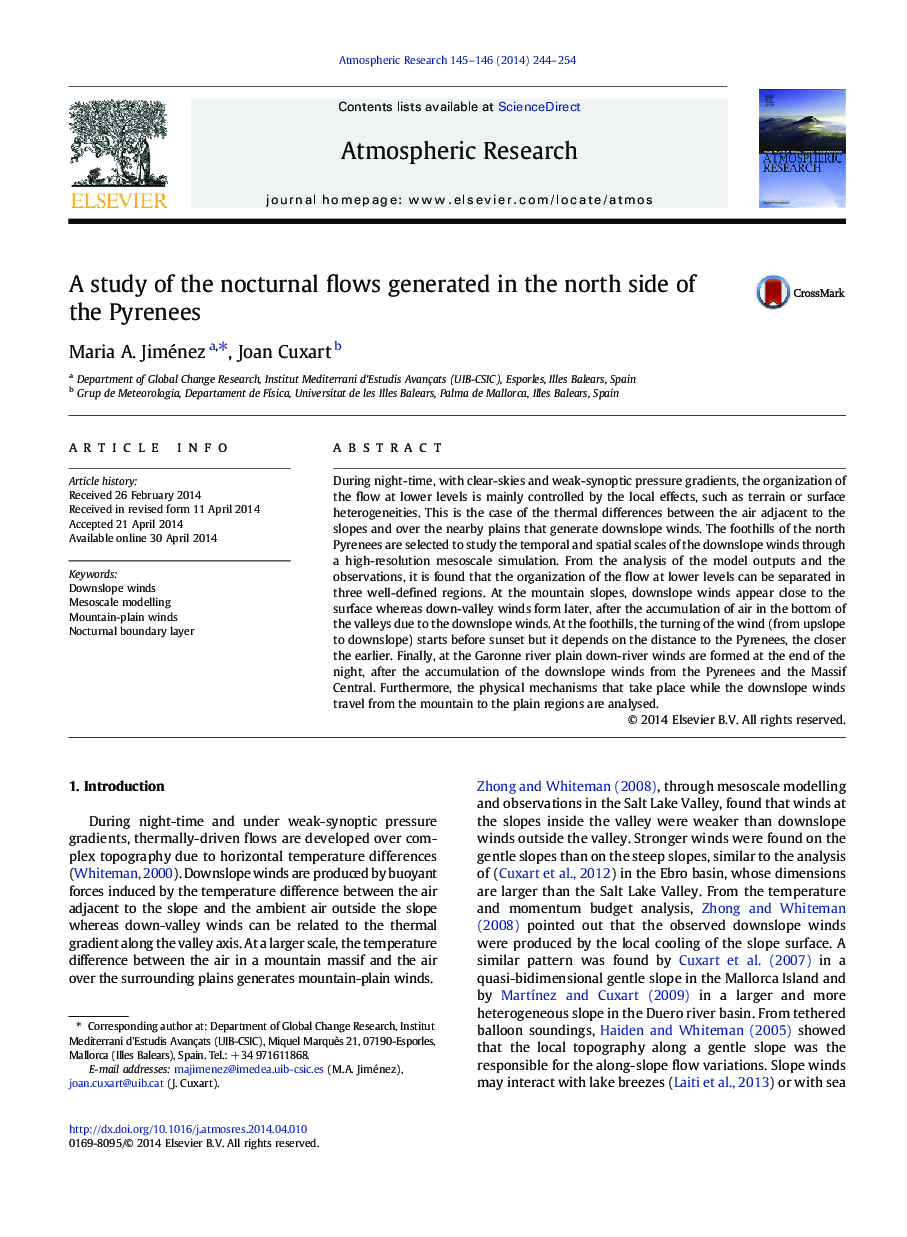| Article ID | Journal | Published Year | Pages | File Type |
|---|---|---|---|---|
| 6343577 | Atmospheric Research | 2014 | 11 Pages |
Abstract
During night-time, with clear-skies and weak-synoptic pressure gradients, the organization of the flow at lower levels is mainly controlled by the local effects, such as terrain or surface heterogeneities. This is the case of the thermal differences between the air adjacent to the slopes and over the nearby plains that generate downslope winds. The foothills of the north Pyrenees are selected to study the temporal and spatial scales of the downslope winds through a high-resolution mesoscale simulation. From the analysis of the model outputs and the observations, it is found that the organization of the flow at lower levels can be separated in three well-defined regions. At the mountain slopes, downslope winds appear close to the surface whereas down-valley winds form later, after the accumulation of air in the bottom of the valleys due to the downslope winds. At the foothills, the turning of the wind (from upslope to downslope) starts before sunset but it depends on the distance to the Pyrenees, the closer the earlier. Finally, at the Garonne river plain down-river winds are formed at the end of the night, after the accumulation of the downslope winds from the Pyrenees and the Massif Central. Furthermore, the physical mechanisms that take place while the downslope winds travel from the mountain to the plain regions are analysed.
Related Topics
Physical Sciences and Engineering
Earth and Planetary Sciences
Atmospheric Science
Authors
Maria A. Jiménez, Joan Cuxart,
